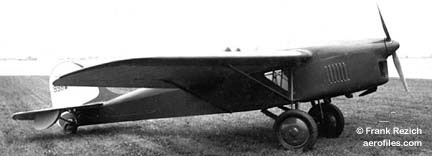Ariel
PH-SAM
Deze Siebel Fh 104 Hallore had ik ook zonder aanwijzingen herkend!
The Siebel Fh 104 Hallore was a small German twin-engined transport, communications and liaison aircraft built by Siebel.
In 1934, the Klemm Leichtflugzeugbau set up a new factory at Halle, for production of all-metal aircraft (as opposed to Klemms normal light aircraft) and transferred the development of a new twin engined transport, the Klemm Kl 104 to the Halle factory, the type being redesignated Fh 104. Klemm transferred control of the factory to Fritz Siebel in 1937, the year the Fh 104 prototype first flew. It had a metal fuselage, plywood covered wings and a hydraulic undercarriage that retracted into the lower part of the engine nacelles. It became known as the 'Hallore' after the name given to those born in that city.
Fh 104s' won long distance flying competitions in 1938 and an example flew 40,000 km around Africa in 1939. It won the principal award in the 1938 Littorio Rally[1]. During World War II the aircraft was used as a personal transport aircraft by some senior Wehrmacht officers and officials including Adolf Galland, Albert Kesselring and Ernst Udet. At least 15 aircraft appeared on the pre-war German civil register.
Johannes
The Siebel Fh 104 Hallore was a small German twin-engined transport, communications and liaison aircraft built by Siebel.
In 1934, the Klemm Leichtflugzeugbau set up a new factory at Halle, for production of all-metal aircraft (as opposed to Klemms normal light aircraft) and transferred the development of a new twin engined transport, the Klemm Kl 104 to the Halle factory, the type being redesignated Fh 104. Klemm transferred control of the factory to Fritz Siebel in 1937, the year the Fh 104 prototype first flew. It had a metal fuselage, plywood covered wings and a hydraulic undercarriage that retracted into the lower part of the engine nacelles. It became known as the 'Hallore' after the name given to those born in that city.
Fh 104s' won long distance flying competitions in 1938 and an example flew 40,000 km around Africa in 1939. It won the principal award in the 1938 Littorio Rally[1]. During World War II the aircraft was used as a personal transport aircraft by some senior Wehrmacht officers and officials including Adolf Galland, Albert Kesselring and Ernst Udet. At least 15 aircraft appeared on the pre-war German civil register.
Johannes
Laatst bewerkt:





